In the following circuits PN - junction diodes D1,D2andD3 are ideal for the following potentials of A and B. The correct increasing order of resistance between A and B will be
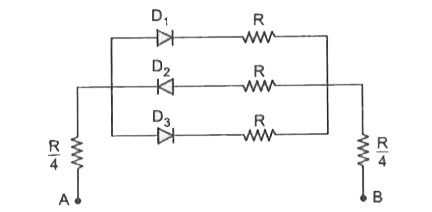
(i) −10V,−5V
(ii) −5V,−10V
(iii) −4V,−12V Solution in Kannada
(i)<(ii)<(iii)
(iii)<(ii)<(i)
(ii)=(iii)<(i)
(i)=(iii)<(ii)
The correct Answer is:C
VA=−10VandVB=−5V
Diodes D1andD3 are reverse biased and D2 is forward biased.
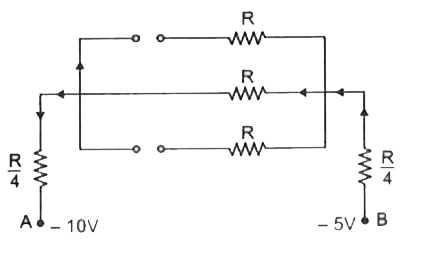
⇒RAB=R+R4+R4=32R
(ii) When VA=−5VandVB=−10V
Didoes D2 is reverse biased D1andD3 are forward biased
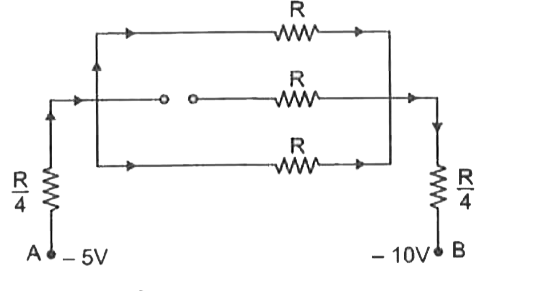
⇒RAB=R4+R2+R4=R
(iii) In this case equivalent resistance between A and B is also R,
Hence (ii) = (iii) < (i)
Similar Questions
P-N जंक्शन डायोड के निम्नलिखित सर्किट में D_1, D_2 और D_3 आदर्श हैं तो i है
View SolutionIn a Germanium diode, the forward current increases from 100mA to 200 mA, when forward voltage changes from 5V to 10V. The forward resistance of the diode is
View SolutionIn a series resonant circuit, the A.C. voltages across resistance R, inductor L and capacitor C are 5V, 10V and 10V respectively. The A.C. voltage applied to the circuit will be .......
View Solutionin the foll. Circuit of PN junction , diodes D1,D2andD3 are ideal then I is
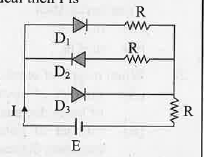
View SolutionFor the given circuit of PN -junction diode, which of the following statements is correct?
View SolutionIn a series resonant circuit the ac voltages across resistance R , inductance L and capacitance C are 5V, 10V and 10V respectively. The ac voltage applied to the circuit will be
View SolutionIn the following circuits, PN - junction diodes D1,D2andD3 are ideal for the following potential of A and B, the correct increasing order of resistance between A and B will be
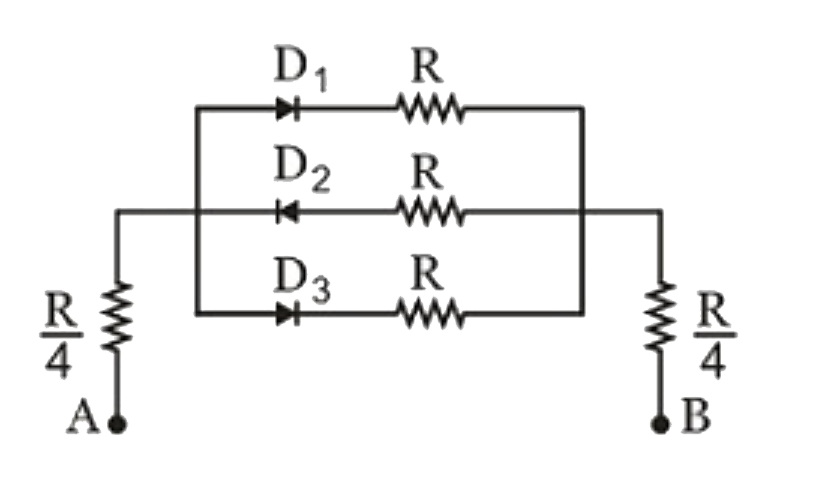
(i) −10V,−5V
(ii) −5V,−10V
(iii) −4V,−12V
View Solution

